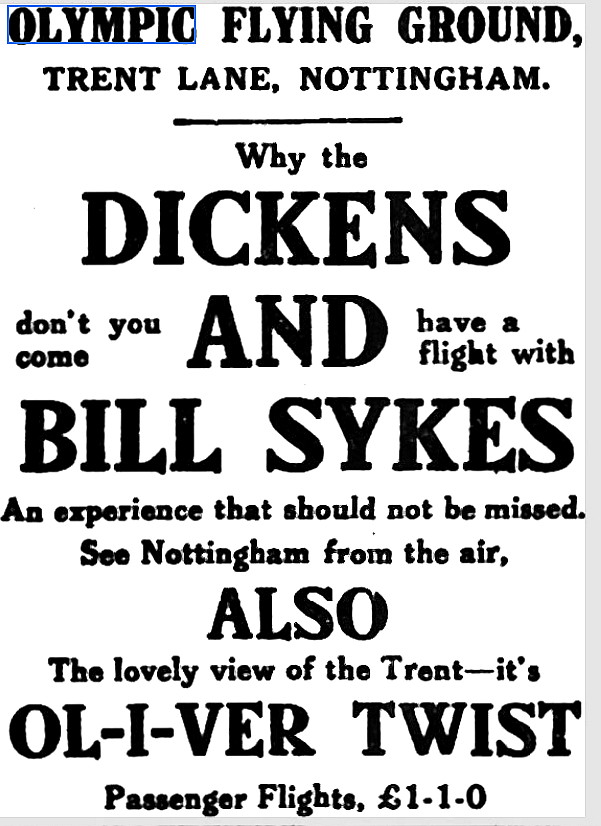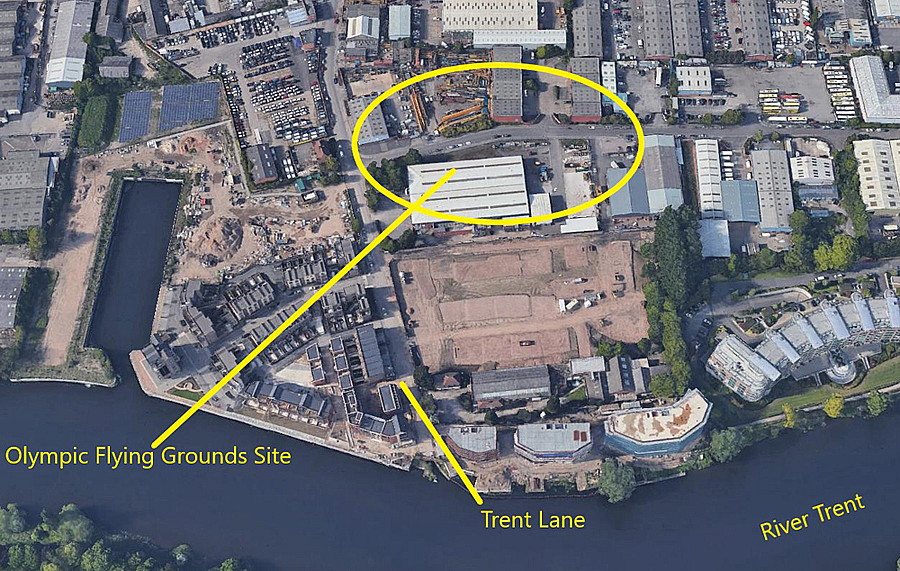Olympic Grounds
OLYMPIC GROUNDS: Temporary aerodrome
Note: This location was, briefly, also known locally as OLYMPIC FLYING GROUNDS during May and June 1920.
Operated by: Mr H Sykes during May. Central Aircraft Company during June.
Mr H Sykes was operating here from the 8th May until? According to the second advert below, he was still operating at least until the 25th May.
Central Aircraft Company on the 1st and 2nd June. They did have big plans to extend their stay, but as far as seems known (?) nothing came of this. A display was held on the 1st June and passenger services commenced on the 2nd.
Location: Just E of Trent Lane, close to and SE of Nottingham city centre
A MICHAEL T HOLDER GALLERY
We have Mike Holder, a great friend of this 'Guide', to thank for undertaking research into this little known venue.
The first advert was published in the Nottingham Evening Post on the 4th May 1920.
The Notice was published in the Nottingham Journal on the 22nd May 1920, followed shortly after by the second advert on the 25th May.
The short article was published in The Aeroplane on the 9th June 1920.
NOTES: This was an era, shortly after the Armistice, when the country was awash with pilots and ground crew who, having learnt their 'trade' during WW1 were keen to stay involved in aviation. Surplus aircraft were also plentiful and, relatively, cheap to buy. As displays coupled with joy-ride flights were very popular, the Avro 504, especially the 504K and 504N variants, were invariably the aircraft of choice for most operations. The reason being that Avro were offering really quite cheap conversions enabling two passengers to be taken aloft.
Without much doubt supply was exceeding demand, so many operators were very keen to offer rather grandiose schemes, virtually all of which soon foundered, including kinds of charter, air taxi and even regional airline ideas. Laudable perhaps, but, by and large ahead of the times. The basic infrastructure barely existed plus of course navigation methods were very primitive and flying on instruments a skill still in its infancy.
Indeed, it was not until 1929 that Sir Alan Cobham launched his epic Municipal Aerodrome Campaign, running from May until October. During this time he visited 107 towns and cities exhorting the local big-wigs to set about providing aerodromes. The road network in the U.K. was mostly not suitable for travelling any kind of distance, and, although the rail network was mostly quite extensive, there were numerous examples of routes by which travel by air made a great deal of sense, for those few who could afford it. The main reason why using aircraft, especially in the more remote parts of Scotland, saw the pioneering of regional air services.
We'd love to hear from you, so please scroll down to leave a comment!
Leave a comment ...
Copyright (c) UK Airfield Guide
























